Effective Solutions: Magic Stain Remover for Clothes
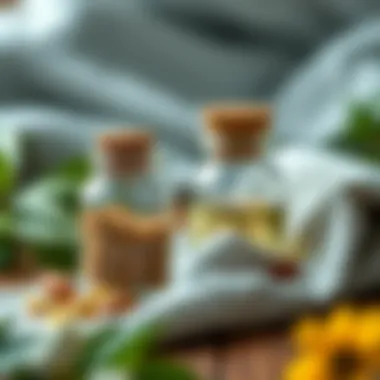
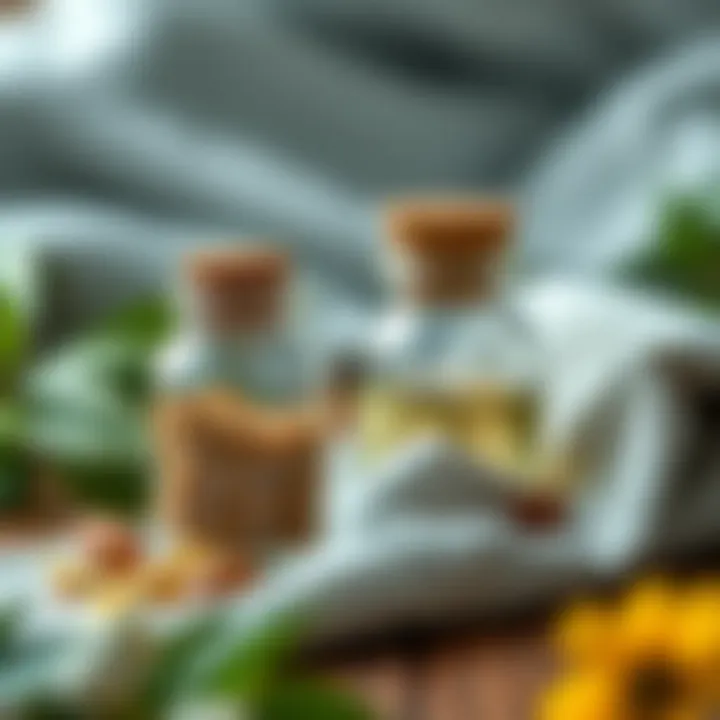
Intro
Stains are like uninvited guests; they show up when you least expect it and tend to linger long after they’ve arrived. For anyone who cherishes their wardrobe—designers, stylists, or fashion students—dealing with these blemishes is an unavoidable reality. However, navigating the intricate world of stain removal doesn’t have to feel like climbing a mountain. With the right knowledge, practical techniques, and understanding of materials, it is possible to restore your garments to their original glory.
This article delves into the science of stain removal, exploring various methodologies including natural ingredients and eco-friendly alternatives. The focus will be on identifying different types of stains, applying effective treatments, and understanding the environmental impact of conventional products. You’ll discover that the journey to flawless clothing does not merely involve throwing yet another stain remover at the problem, but rather, a deeper comprehension of fabric care and maintenance.
Get ready to uncover practical solutions that can help maintain clothing quality and prolong longevity, elevating your fashion game to a whole new level.
Understanding Stains on Clothes
When it comes to maintaining the quality of our garments, understanding stains on clothes can not be understated. Stains are not just unsightly; they can also indicate deeper issues with fabric care, longevity, and even personal hygiene. Recognizing the origin and types of stains can equip you with the knowledge needed for effective removal and preservation of clothing quality. By understanding stains, you make informed decisions that positively impact your wardrobe's lifespan.
The Origin of Stains
Stains come from a wealth of sources, many of which are at home. They can arise from everyday activities, often with little warning. Take, for example, the seemingly harmless act of enjoying a meal. A burst of tomato sauce can lead to a difficult predicament. Stains might originate from food, beverages, body fluids, or even the environment—each needing a tailored approach for removal. By knowing where stains typically come from, you can be better prepared to tackle them effectively before they set in.
Common Types of Stains
- Food Stains: Food stains, like those from chocolate or ketchup, tend to be significant culprits in our lives. They are not only pervasive but also diverse. Each type presents its own challenges and demands unique treatment strategies. The sticky nature of many food stains makes them cling to fibers, often making them stubborn to remove. However, their organic composition may also allow for effective natural cleaning solutions, making them an important category in any stain-remover's repertoire.
- Grease and Oil Stains: These stains can often be the trickiest to deal with. Occurring from cooking oil, butter, or even cosmetics, the complex nature of grease can prevent regular washing methods from succeeding. Grease can bind to the fabric fibers, creating a stubborn blot that commands attention. They require specific solvents for effective removal, and often, the wrong method could set the stain deeper, complicating the issue.
- Wine and Beverage Stains: Wine and other beverage stains are not just restricted to fine dining. A careless sip or an enthusiastic toast may spell disaster for your favorite shirt. However, these stains share a common property—they're often water-soluble. This characteristic can aid in their removal, as using the right techniques promptly can help manage these accidents with greater ease than one might expect.
- Blood Stains: The sight of blood on your favorite outfit can send anyone into a panic. Blood stains come with their unique challenge due to their protein-based composition. This makes them more prone to setting further when exposed to heat. Quick action is crucial here. With the right methods, tackling these stains might not be as daunting as it seems.
- Ink Stains: Ink stains are notorious, often created by leaky pens or markers. The dye components can bond tightly with fabric, creating a permanent-looking effect if not addressed swiftly. While the challenge is real, knowing the precise steps to take can turn the tide in one's favor. The wrong treatment may spread the ink further, so understanding how different inks react with various substances is crucial.
The Complexity of Stain Removal
While each stain type comes with its distinct characteristics and approaches to treatment, the complexity of stain removal often goes beyond simple remedies. Factors such as fabric type, and the age of the stain significantly influence the effectiveness of various approaches. Moreover, not all stains are created equal; they interact differently with fabrics due to variable chemical compositions and physical properties. Tackling stains may sometimes feel like a game of chess, requiring strategic moves to outsmart the situation.
"Understanding the intricate behaviors of stains can be the key to mastering stain removal."
Learning to differentiate between the many factors at play can lead to more successful removal strategies. As such, knowledge of stains is essential for anyone looking to protect and prolong the life of their clothing.
The Science Behind Stain Removal
Understanding the science behind stain removal is integral to effectively maintaining clothing. Stains are more than just unsightly marks; they are a complex interaction of various substances that can bind to fabric fibers. Knowing how these interactions work can not only help in choosing the right cleaning methods but also increase the longevity and quality of garments.
This section delves into the foundational concepts that guide effective stain treatment, including the chemical reactions involved and the influence of fabric types on stain management strategies.
Chemical Interactions
Chemical interactions play a critical role in how stains adhere to fabrics and how effective a cleaning solution can be. When a stain spills onto clothing, the molecules of the staining agent, such as wine or grease, start adhering to the fabric fibers. The way these molecules bind can vary widely depending on their chemical composition.
For example, acid-based stains, like those from citrus fruits, can react differently with alkaline or neutral cleaning agents like baking soda or club soda. This reaction can either break down the stain or make it more stubborn. It's the delicate dance of molecules that determines the ease or difficulty of stain removal, making it essential to choose the right agent based on the stain's composition. For a successful approach:
- Identify the stain type: Knowing whether it's protein-based or oil-based can guide your choice of cleaning solution.
- Choose appropriate cleaning agents: For protein stains (e.g., blood), an enzyme-based cleaner is often more effective, while grease stains respond well to solvent-based products.
In summary, understanding the chemical nature of stains and their interactions with cleaning agents is key to achieving lasting results.
Physical Properties of Fabrics
The fabric composition not only influences how stains cling but also how they can be treated. Different fabrics react differently to stains and cleaning products due to their physical properties. Factors like fiber type, weave, and even color can determine the susceptibility to staining and the appropriate cleaning method.
- Fiber Types: Natural fabrics like cotton tend to absorb stains more deeply than synthetic fibers like polyester, which are often more resistant. However, treating stains on silk or wool requires gentleness to avoid damage.
- Weave Structure: A tightly woven fabric may repel stains better than a loose-weave counterpart, but when stains do occur, they might be more challenging to remove from those tight weaves due to limited accessibility of fibers for cleaning solutions.
- Color Fastness: Darker fabrics can sometimes hide stains better but may also absorb certain cleaning agents differently, which could lead to discoloration. Always check for colorfastness before applying a cleaning solution, especially on bright or dark fabrics.
This comprehensive knowledge of fabric properties aids in selecting the right stain removal strategy. Thus, becoming acquainted with these elements empowers not just designers and stylists, but anyone who wishes to safeguard their clothing collection.


"The right knowledge transforms a seemingly insurmountable task into a manageable solution."
In essence, recognizing the intricate relationship between chemical interactions and the physical characteristics of fabrics encourages more informed decisions during the stain removal process. Familiarity with each aspect not only enhances cleaning efficacy but preserves the integrity and aesthetics of clothing.
Natural Ingredients for Stain Removal
Natural ingredients offer a potent and eco-friendly approach to tackling stains on clothes. Unlike their chemical counterparts, these ingredients are often readily available, inexpensive, and can be less harsh on both fabric and the environment. Utilizing natural solutions contributes to preserving clothing quality while mitigating potential harm to health and the planet. Furthermore, utilizing these ingredients can foster a deeper connection to the cleaning process, empowering individuals to take charge of their garment care.
Vinegar
Vinegar stands as one of the unsung heroes of home cleaning. It's many things rolled into one - a deodorizer, a fabric softener, and, yes, a stain remover. It works especially well on odors and can cut through stains like an old friend. Mixing equal parts of white vinegar with water can yield an effective pre-treatment solution. Just spray it on the stain, let it marinate for around 30 minutes, and then launder as usual. This not only helps break down stubborn marks but also keeps the fabric fresh.
"Vinegar's acidity works wonders on stubborn stains and is gentle on your wallet."
Baking Soda
Every household should keep baking soda around—it’s that versatile! As a base, it can neutralize acids that often contribute to stains, making it an effective companion to vinegar. Combine it with water to form a paste and apply it directly to the stain. Let this concoction sit for a good half hour before washing. The effervescence can help lift dirt and grease, leaving your clothes looking brand new. Plus, there’s that added benefit of deodorizing nasty smells.
Lemon Juice
Lemon juice isn’t just for summer drinks; it's a natural brightener, too. That citric acid not only boosts the cleaning power but also acts as a bleaching agent, making it particularly effective on whites and light-colored fabrics. For a gentle approach, dab lemon juice directly onto the stain and sprinkle some salt for extra grit, then expose it to sunlight. This method can work wonders and is particularly effective on rust stains and sweat marks. The zesty smell is just an added perk.
Hydrogen Peroxide
Hydrogen peroxide is a somewhat lesser-known cleaning agent in the realm of home remedies but boasts impressive stain removal capabilities. It's effective on blood stains, wine spills, and even tough grass marks. Just remember to use it wisely—test it on an inconspicuous area first to ensure it doesn't bleach your favorites. Typically, a concentration of around three percent is sufficient. Apply directly, let it fizz, and rinse thoroughly. It’ll help lift those pesky stains while being less harmful than many commercial options.
Commercial Stain Removers
In the realm of laundry, commercial stain removers hold an esteemed place. They provide quick responses to the often daunting task of stain management, offering professionals and fashion enthusiasts alike a reliable ally in the fight against the everyday mishaps that threaten our garments. The sheer variety of products tailored for specific stain types—from misleadingly simple spills to stubborn grease marks—cannot be understated. They represent a treasure trove of possibilities, and understanding these products is vital for anyone looking to keep clothing in pristine condition.
The right commercial stain remover can prove advantageous in a variety of settings, such as households, fashion studios, or even on clothing store floors. These products are engineered using complex chemical formulations designed to tackle a wide range of stains effectively. The first step is understanding that stains not only vary in their origin but also in their composition. A one-size-fits-all approach does not work well with stains. Hence, exploring the myriad product offerings can often lead to tailored solutions.
"The best stain remover is like a good detective; it knows exactly how to interrogate a stain and solve its mysteries."
Overview of Popular Products
When browsing the aisles of supermarkets or online marketplaces, you may come across well-known brands such as OxiClean, Shout, and Zout. Each of these has built a reputation for being particular good at specific types of stains. For example, OxiClean boasts its oxygen-powered cleaning approach, which makes it effective against protein-based stains, such as food and sweat. On the other hand, Shout features formulations that claim to be very effective for grease and oil stains, adding versatility to your laundry routine.
It's not just mainstream products that deserve attention; emerging brands and niche products often present innovative solutions worth considering. For instance, brands like Puracy or Seventh Generation promote eco-friendly ingredients that can tackle stains while also paying due heed to environmental concerns. While they may not yet rival the big guns in terms of market share, their focus on sustainability can appeal to conscious consumers.
Evaluating Product Ingredients
Delving deeper into what makes these products tick can provide invaluable insights for stylists, designers, and anyone wanting to preserve fabric integrity. It's not only about efficacy; the ingredients play a crucial role in a product's performance and safety.
Look for active ingredients that specifically target stain compositions. Enzymes, for example, are crucial when dealing with protein stains but can be less effective on dye-based or oily stains. Ingredients such as sodium percarbonate are excellent for breaking down organic stains, but they can be too harsh on delicate fabrics. Careful evaluation enables one to make informed decisions in fabric selection and product usage.
In addition to effectiveness, consider the potential health and environmental impacts of the products. Some commercial cleaners may contain harsh substances that could harm allergy sufferers or contribute negatively to our planet. Many brands now highlight their commitment to safe, biodegradable formulations, which can alleviate some of the concern.
Consumer Reviews and Case Studies
Real-world experiences shared through consumer reviews and case studies can provide valuable guidance when choosing the right stain remover. On platforms such as Reddit and various consumer review sites, users often exchange tales of triumph and woe over specific products. Some may rave about how a particular formula worked wonders on a red wine stain at their dinner party, while others might share disappointment after trying a highly marketed product that underperformed.
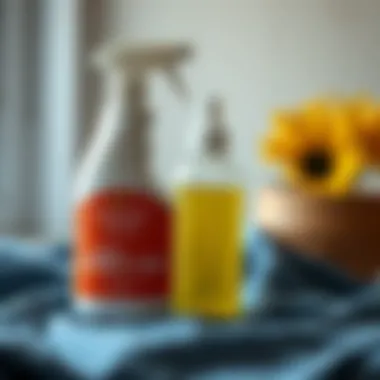
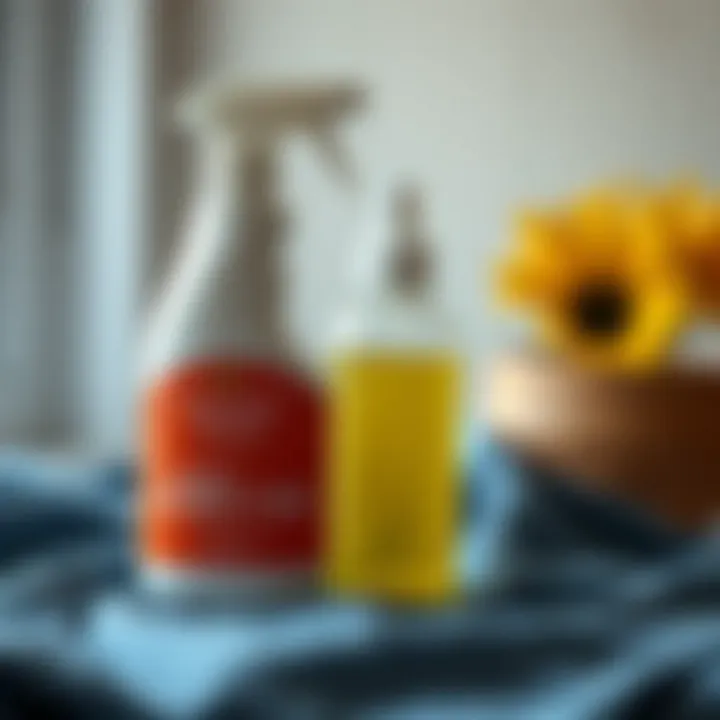
These anecdotes can paint a vivid picture of how effective (or ineffective) a commercial stain remover can be in various scenarios. For designers and stylists, understanding these community insights can provide a deeper appreciation for which products to recommend. Testimonials that shed light on versatility in application, fabric compatibility, or even how well the products perform in different water temperatures can inform better practices in fabric care.
Altogether, commercial stain removers remain a potent tool in the arsenal for keeping clothing in excellent condition. Their effectiveness, when selected wisely, can bridge the gap between a stained garment and a well-maintained wardrobe.
Practical Stain Removal Techniques
In this intricate tapestry of clothing care, the techniques we employ for stain removal are like the fine embroidery that enhances a garment's overall aesthetic. Taking practical steps can mean the difference between preserving the integrity of your favorite outfit and relegating it to the back of the closet, a mere ghost of its former glory. The importance of honing effective stain removal techniques cannot be overstated. They help maintain the fabric's quality while also reducing the chances of color fading or fabric deterioration.
Pre-Treatment Strategies
The first step in tackling a stain is understanding that timing is everything. Getting to it quickly is crucial. When you spot a stain—be it spaghetti sauce from last night's dinner or a splash of red wine from a celebratory evening—you must address it posthaste.
- Act Fast: Dab, don’t rub! Blotting out excess liquid with a clean cloth should be your first course of action. It prevents further penetration into the fabric threads.
- Use Cold Water: Rinsing the stained area with cold water can often lift a considerable amount of the stain. Hot water might set the stain in deeper, particularly with protein-based stains like blood or egg.
- Test Your Remedies: Before going all in with a stain remover, whether it's a commercial product or a natural remedy, it’s wise to test it out on a less visible part of the fabric. This way, you avoid any nasty surprises like discoloration or damage.
Effective Washing Practices
Once you’ve pre-treated the stain, the next step is the washing phase. It’s not just a matter of tossing the garment into the washing machine and hoping for the best.
- Read Labels: Always check the care label for washing instructions, which state the preferred methods for fabrics.
- Use the Right Temperature: The water temperature can either assist or hinder your stain removal efforts. Delicate fabrics, such as silk, thrive in cool water whereas cotton typically requires hotter cycles for optimal cleansing.
- Choose a Quality Detergent: A detergent designed for stain removal can be a valuable ally. Look for one that specifies its effectiveness on the kinds of stains you're combatting.
Air Dry vs. Machine Dry
After washing, comes the drying dilemma; to air dry or machine dry is a question that merits consideration.
- Air Drying Advantages: Hanging your clothes to air dry is a gentle option that reduces the risk of damage caused by high heat. It’s particularly beneficial for delicate fabrics that may warp or shrink in machine dryers.
- Machine Dry Caution: If you opt for a machine dryer, ensure it’s set on a low heat or delicate cycle. Keep a close eye on clothes to ensure they aren’t overheated. Additionally, once the cycle is complete, promptly remove and check for any lingering stains. Heat can set stains, making them virtually impossible to remove later.
"A stitch in time saves nine" - an old saying that rings particularly true when it comes to keeping your clothes looking immaculate. Stain management is part art, part science, and requires a touch of finesse.
By employing these practical techniques, you’ll be well on your way to keeping your garments looking fresh and vibrant. Experimenting with different methods will help you find what works best for your unique wardrobe.
Preventing Stains in the First Place
Preventing stains before they happen is like putting up a guardrail on a winding road; it keeps trouble at bay and saves time, effort, and heartache later down the line. As the old saying goes, "An ounce of prevention is worth a pound of cure." This mantra resonates especially when it comes to maintaining the integrity and look of clothing. Not only does preemptive action extend the life of garments, but it also saves on costly dry-cleaning bills and preserves the fabric's aesthetic appeal.
By understanding how to prevent stains, individuals can take ownership of their clothing care, minimizing the likelihood of unsightly marks appearing in the first place.
Choosing the Right Fabrics
Fabric choice plays a pivotal role in stain prevention. Some materials resist stains better than others; for instance, synthetic fibers like polyester are less absorbent compared to natural fibers such as cotton or linen. When making wardrobe decisions, consider the likelihood of exposure to spills or stains.
- Stain-resistant fabrics: Many manufacturers today offer stain-resistant treatments on textiles, making it ideal for those who may find themselves in splash zones frequently.
- Color considerations: Light-colored fabrics tend to show stains more than darker ones. Opting for patterns or darker hues can sometimes offer a little camouflage against untimely spills.
Being mindful of fabric selection not only influences stylish choices but helps in crafting a long-lasting wardrobe.
Adopting Precautionary Measures
Being proactive is a key to successfully keeping stains at bay. Simple precautionary measures can make a world of difference.
Stain Repellent Treatments
Stain repellent treatments are designed to provide an invisible shield against everyday spills and messes. These treatments often contain specialized chemicals that create a barrier on the material, preventing liquids from seeping into the fibers. With the right application, fabrics can resist stains from common culprits like coffee, wine, or food.
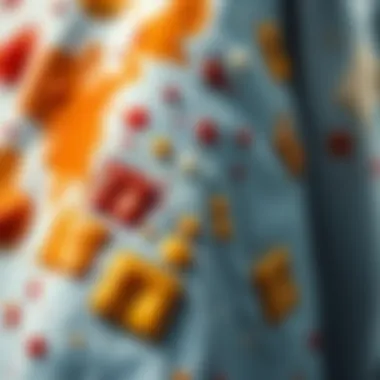
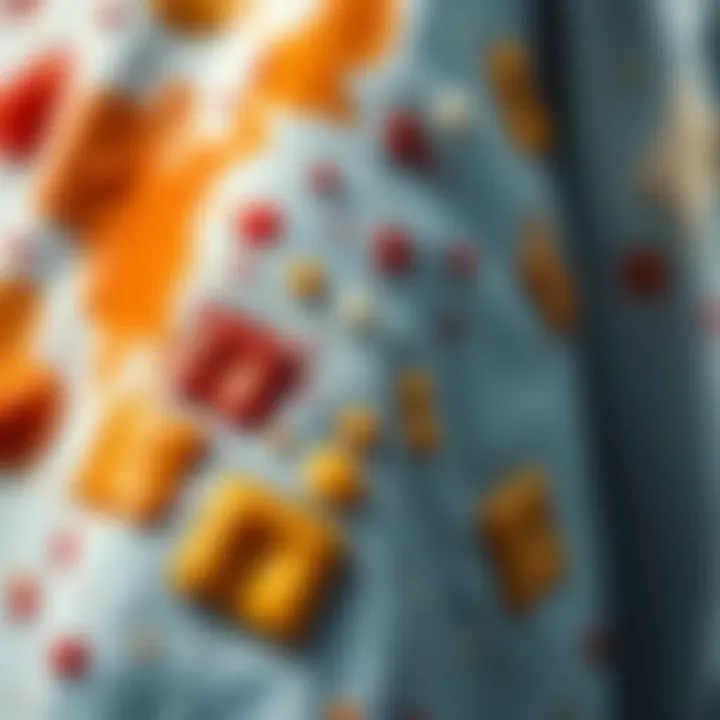
- Key characteristic: One major selling point of stain repellent treatments is their ability to be applied at home or professionally, giving consumers flexibility based on their needs.
- Unique features: Some treatments even allow for easy cleaning after spills, as they often enable a simple wipe-down rather than a full wash.
- Advantages/Disadvantages: While these treatments can be extremely effective, it’s crucial to note that not all treatments offer the same level of protection. Some may wear off after several washes, necessitating reapplication. Therefore, one must evaluate the longevity of treatments and consult care instructions before purchasing.
Mindful Eating Practices
Eating carefully is a number one tip when it comes to keeping clothes intact. It might sound basic, but mindful eating practices can be quite effective. Being cognizant of surroundings, and type of food, and using utensils over fingers can significantly reduce the accidental drops of sauce or spill.
- Key characteristic: Mindful eating focuses on awareness and intentionality while consuming food, which can help in reducing messy accidents.
- Unique features: This practice extends beyond the dining table—using napkins strategically or even taking extra care when opening drink containers can prevent stained attire.
- Advantages/Disadvantages: While mindful eating practices can require a bit more concentration, the reduced likelihood of stains greatly outweighs the momentary discomfort of vigilance.
Ultimately, adopting preventative measures is about establishing habits that protect one’s clothing from the get-go. It may take a little extra effort, but the benefits can lead to a cleaner, more polished appearance over time.
Environmental Impacts of Stain Removers
When it comes to maintaining the aesthetic quality of our clothing, our choices in stain removers can play a surprisingly significant role in environmental well-being. While there’s no doubt that getting rid of an unsightly mark or spill is crucial, we cannot ignore the broader consequences of these products. They often carry hidden costs like pollution and the depletion of natural resources. So, understanding the environmental impacts of stain removers is vital, not just for the health of the planet, but also for ensuring that the garments we so dearly cherish have minimal ecological footprints.
Biodegradability of Ingredients
Many stain removers on the market are packed with chemicals that are anything but friendly to the environment. In fact, certain ingredients can take years or even decades to decompose. This lag time can lead to the accumulation of hazardous materials in our landfills, waterways, and eventually, our oceans.
Biodegradable ingredients, on the other hand, break down naturally over time, reducing their long-term impact on Mother Nature. Simple substances like bicarbonate of soda and vinegar are not only effective for stain removal but also kind to the planet. They can provide a solution that tackles stains without leaving behind toxic residues.
Consider the following:
- Biodegradable components, like citric acid, can neutralize stubborn stains while being less harmful to ecosystems.
- Comparatively, synthetic compounds such as surfactants or phosphates often persist in the environment, causing imbalances in local wildlife and water systems.
- Choosing products made from renewable plant-based sources contributes to sustainability goals, making it an appealing option for conscious consumers.
"Being conscious about what we put into our environment today can lead to a healthier tomorrow."
Toxicity Concerns
Toxicity in stain removers poses more than just a risk to the environment; it can also jeopardize human health. Many commercial products contain volatile organic compounds (VOCs), which can contribute to air pollution and respiratory issues. Prolonged exposure to these chemicals not only raises eyebrows among environmental scientists but also poses threats in domestic settings where people, especially children, might be absorb the chemicals unintentionally.
A few critical points to consider:
- Look out for ingredients known to be harmful, such as bleach and synthetic fragrance, which can trigger allergic reactions or exacerbate respiratory conditions.
- Safer alternatives, such as plant-based surfactants or enzyme-based solutions, are becoming more readily available and effective.
- Pay attention to warning labels and certifications on products; many eco-friendly brands provide transparency regarding their formulations.
In summary, while the goal of removing stains is undoubtedly essential, being thoughtful about the products we choose is equally crucial. Whether it's opting for biodegradable solutions or confronting toxicity head-on, our choices in stain removal can lead to a more sustainable future for fashion and the planet.
Closure
In this article, we’ve delved into the myriad aspects of effective stain removal, emphasizing its importance for maintaining clothing's aesthetic and longevity. Understanding the variety of stains and the science behind their removal is not just for the average consumer, but also for designers, stylists, and fashion students who aim for excellence in their work. Stains can be a designer’s nemesis, impacting both the fabric's appearance and a garment’s viability in the market.
The integration of both natural and commercial solutions provides a wide spectrum of choices, catering to different preferences and ethical standpoints. With increasing awareness of environmental impacts, opting for biodegradable and non-toxic stain removal methods has transformed from being merely a choice into a necessity. The conversation around sustainability in fashion extends beyond creation into garment care practices, further positioning stain management as a crucial factor in responsible fashion.
By confidentlty utilizing a combination of the techniques and products discussed, one can tackle stains effectively, ensuring that garments remain vibrant and usable for a longer time. Whether it’s through pre-treating strategies or informed purchasing decisions, every step plays a role in the intricate dance of textile care.
Recap of Key Points
In summary, the following key points stand out:
- Understanding Stains: Recognizing various stain types allows for targeted and effective removal methods.
- Natural vs Commercial: A balanced approach using both natural ingredients like vinegar and commercial removers offers flexibility.
- Practical Techniques: Adopting the right washing practices and pre-treatment strategies greatly enhances stain removal success.
- Preventive Measures: Choosing suitable fabrics and practicing mindful behavior can prevent stains before they happen.
- Environmental Awareness: Understanding the environmental impact of products encourages responsible choices in cleaning methods.
"Taking care of your clothes doesn't just keep them looking fresh, it keeps them alive longer."
Final Thoughts on Stain Management
Stain management transcends mere cleaning; it embodies a philosophy of care and respect for your clothing. Much like a painter selects colors with intention, understanding how to maintain fabric integrity with the right stain-removal techniques and products reflects a deeper appreciation for fashion as an art form.
Whether you’re a student stepping into the world of design or a seasoned professional curating a wardrobe, the rules of stain removal—both seen and unseen—hold great significance. By embracing these guiding principles, you can ensure that not only do your garments look pristine but they also carry stories of thoughtful longevity, reflecting the quality of craftsmanship behind every stitch.







